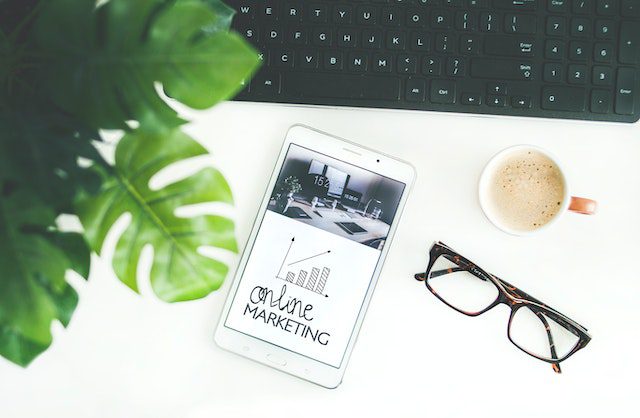The key to successful marketing for small businesses is to understand that there are many different types of customers. Some people will buy from you because they need your product or service; others will buy because they like your company.
Small Business Marketing ideas below will show you how to use various strategies and tools to promote your business effectively.
1. Search Advertising
The first thing you should consider is whether or not you want to use paid ads. Paid search advertising is one of the most popular methods of online advertising because it allows businesses to target specific keywords. However, there are some drawbacks to using paid search ads. For example, if you choose to advertise on Google, you’ll be charged per click. In addition, you won’t get much traffic from organic searches, which means you’ll have to pay for every click.
If you decide to go with paid search ads, you’ll need to set up an account with Google AdWords. Once you’ve done that, you’ll need to create a campaign. A campaign is basically a series of keywords that you want to target. You can then select the type of ad you’d like to display (for example, text ads, image ads, video ads, etc.). After you’ve created your campaign, you’ll need to add keywords to it. These keywords will help determine what kind of ads you see when people search for those terms.
When you’re ready to launch your campaign, you’ll be able to choose from different types of ads. For example, if you want to promote a new product, you might opt for a text ad. On the other hand, if you want to encourage customers to buy something, you could use an image ad. The choice is yours.
If you are new to this and do not have experience creating paid advertisements, I highly suggest that you hire a freelancer who will do this for you within your budget.
2. Referral Program
A referral program is one of the easiest ways to build brand loyalty and customer relationships. It also helps you generate more leads and sales.
Click here to view a list of most recommended referral programs!
If you want to create a successful referral program, you must first understand what makes referrals work. The most important thing to remember is that people refer others because they trust you. When you provide them with value, they feel valued themselves. In return, they share your products and services with their friends and family.
You can use it to increase sales, build brand awareness, and generate new leads. To get started, you should ask yourself some questions. What kind of product or service would be valuable to your customers? How could you offer something unique to your clients? And how can you reward those who refer you? Once you know the answers to these questions, you can develop a plan to implement a referral program.
You can set up a referral program using a variety of different methods. For example, you can send a free gift to each person who refers a friend. Or, you can offer a discount to anyone who refers a client. You can also offer a bonus if a referred customer purchases a certain amount of merchandise. Whatever method you choose, make sure it’s easy for your customers to participate. If you require them to fill out forms or sign contracts, they might decide against referring you.
3. Local Advertising
If you’re looking to expand your local advertising efforts, consider using Google My Business (GMB) listings. These listings allow customers to find out where you are located, what services you offer, and how to contact you. They also let people search for your business by location.
The GMB listing allows businesses to add information such as opening times, directions, phone numbers, and other details. You can also upload photos and videos, which makes your business look more professional. For example, if you own a restaurant, you can post pictures of your menu items and your dining room.
There are three main categories: Business Listings, Service Listings, and Event Listings. Each category has its own benefits and drawbacks.
The best place to start is with a business listing. A business listing is where businesses post information about themselves online. You can find them at websites such as Google Maps, Yelp, Yellow Pages, Facebook, and other social media sites. These listings include basic information about the business, such as address, phone number, website, and hours of operation.
4. Email Marketing
If you want to reach out to potential customers, you should start by creating an email list. This allows you to send targeted messages to people who have expressed interest in what you offer. You can also use this list to remind people about upcoming events or promotions.
The best thing about having an email list is that you can target your audience based on specific interests. You can create lists for different types of products or services, such as pet care, home improvement, or landscaping. You can also create lists for different demographics, such as men or women, young adults or seniors.
If you want to get started creating an email list, you should first determine what type of business you are running. Are you selling a product? Or are you offering a service? Once you know what kind of business you are operating, you can decide which demographic group you would like to reach. For example, if you sell lawn mowing services, you might want to create a list for people who live in a certain neighborhood.
The next step is to choose a platform where you can send emails. You can use GetResponse, Flodesk, Aweber, Moosend, SendinBlue, or other platforms to build your list. Click here to read a list of best email marketing platforms that you can use for your small business.
After you have built your list, you can then send your customers information about your products and services.
5. Start A Blog
If you’re looking for ways to market your business online, consider starting a blog. Blogs are easy to set up and maintain, and they allow you to create content that’s relevant to your target audience. Plus, blogs are searchable, which means potential customers can find them easily.
You can simply use your store website and add a blog section there.
As people search for anything related to your product related niche, they will be able to discover your website through your blog. Also, blogging helps you educate your audience as you share tutorials, educational materials, tips and tricks. This, in return, builds credibility and trust amongst your audience as they see that you know stuff!
6. Market with Social Media
If you’re looking to market your business online, social media is an excellent place to start. According to HubSpot, Facebook alone has 1.79 billion monthly active users, so there’s no shortage of potential customers. Plus, social media allows you to connect directly with people who might not otherwise find you.
The best thing about using social media to promote your business? You don’t have to pay for advertising. In fact, according to Hubspot, most businesses see a return on investment after spending less than $100 per month on social media marketing.
When it comes to social media marketing, there are two main types of strategies: paid and organic.
Paid ads appear at the top of search results, while organic posts show up below them.
Organic posts are free to post, but they take longer to rank in search engines. The key difference between the two is that paid posts target specific keywords, whereas organic content targets broader topics.
I’d suggest starting with Facebook, it is the most popular social media platform in the world. It has over 2 billion active users and more than 1 billion of them are using Facebook mobile app on a daily basis. So, if you haven’t heard about Facebook ads, they are a great way to promote your business. In fact, many businesses use them as their primary marketing strategy.
Conclusion
No matter which option(s) you choose, remember to start small. A lot of companies make this mistake in the beginning where they think that if they market every product that it will help them understand which one is doing well. Problem with this approach is that you will never know which method is working. Always start with that one product and do A/B testing using it – once you get a hang of it, then expand.
Second important thing to remember is, do target audience defining first. If you don’t know your target audience, you are really just shooting in the dark and wasting your money.





